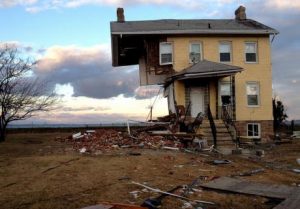
A home appraisal can affect far more than just your mortgage.
What Is An Appraisal?
An appraisal is an unbiased opinion of a specific property’s value on a given date. The appraiser is expected to value property in a competent, objective, and impartial manner, providing a written statement of valuations, called the appraisal report. The appraisal report is the conclusion of the appraiser’s analysis of the subject property.
Why Do You Need An Appraisal?
The majority of appraisals are performed for companies involved in real estate financing. Almost everyone who purchases a single-family residence will take out a loan to cover the majority of the cost of the house. The home itself is pledged as collateral to secure the loan. If you default on your loan, a lender will take ownership and sell your home to satisfy your debt. Lenders need to be sure that the value of the real estate being used as collateral is sufficient to cover the amount of the loan.
When Do You Need An Appraisal?
Appraisals are usually required whenever a property is bought, sold, refinanced, assessed, taxed, condemned, insured, or mortgaged. They may be required for divorce settlements, when business partnerships are dissolved, or when property is listed as a business asset.
Types Of Appraisals
Most appraisals are used to develop an opinion of a property’s current value, but there are other possibilities as well.
Retrospective Appraisal
A retrospective appraisal looks at the value of a property at a point of time in the past. For example, a retrospective appraisal could be used for insurance purposes to find the value of a house that has since burned down.
Prospective Appraisal
A prospective appraisal looks at the value of property at a point in the future. For example, a lender who is providing a construction loan may ask an appraiser to determine if houses should be built for sale in a particular area. Part of the appraiser’s work would be to value the houses as if they were finished.
The Appraiser’s Role
In real estate transactions, an objective, third-party opinion is often needed to develop an opinion of the market value of real property. The professional appraiser, because of training, experience, and ethics, is responsible for giving clients an objective opinion of value, reached without bias. An appraiser has a serious responsibility to be correct in evaluating data and not to allow other factors to influence evaluation of a property.
Definition of Value
Value is defined as the monetary worth of property, goods, or services to buyers and sellers at a given time. It is important to note that people create value. Value is not a built-in item. An item is valuable because people perceive it has worth.
Depending on the purpose of the appraisal, appraisers are asked to find different types of value. The focus of most real estate appraisal assignments is developing an opinion of the market value of a specific property. Market value is usually defined as the most probable price a property would bring in normal market conditions.
Remember that price or cost of a property is not always the same as its value. Price is the amount of money requested or paid for a property, a cost is the amount of money it takes to build a structure.
Financial Crisis and Regulatory Reforms
Every financial crisis seems to be followed by Congressional reforms and new regulations, which are designed to prevent future financial meltdowns. Within the last 25 years, financial institutions have been part of two such fiascos – the Savings & Loan Crisis of the late 1980s, and the Housing Bubble and Financial Crisis of the late 2000s. In part, both of these were caused primarily by unsound real estate lending practices.
Savings & Loan Crisis 1980s – FIRREA
The Savings and Loan Crisis of the 1980s was a wave of saving and loan failures caused by mismanagement, failed speculation, and, in some cases, fraud. The Tax Reform Act of 1986 also caused problems when it changed the tax implications associated with many investment properties. These things, along with other economic issues at the time, combined to cause serious adverse economic consequences. When the economy declined, many property owners defaulted on their loans, resulting in huge losses for lenders.
The causes and consequences of these problems have been examined, and it has been found that in a large percentage of the cases, the loans that were defaulted on had been based on inflated real estate values. In some cases, this overvaluation was due to appraiser incompetence. In other cases, appraisers yielded to pressure from lenders or developers to manufacture values high enough to make the loan work.
All of this led to the realization that credible appraisal reports, performed by ethical and competent appraisers, are necessary to the country’s economic well-being. Since only a small portion of practicing appraisers had memberships in the generally recognized appraisal organizations at the time, most appraisers were not bound to any one set of qualifications, standards, or ethics rules. This deficiency in the real estate appraisal industry needed to be addressed.
Financial Institutions Reform, Recovery, and Enforcement Act of 1989
As a response to the Savings & Loan Crisis, Congress passed the Financial Institutions Reform, Recovery, and Enforcement Act (FIRREA) in 1989.
Title IX of FIRREA empowered federal mortgage regulators to adopt USPAP as the generally recognized standards of practice in the appraisal profession. FIRREA requires all states to establish agencies to license and certify real property appraisers. In addition, FIRREA required that federally related transactions with a transaction value greater than $250,000 be performed by a licensed or certified appraiser. If the transaction is a business loan, a licensed or certified appraiser must be used if the transaction value is greater than $1 million. The transaction value is either the loan amount or the market value of the property involved.
Housing Bubble and Financial Crisis of 2000s – Dodd-Frank Act
The rise of housing prices since 2000 was described by The Economist magazine as the “biggest bubble in history.” The perfect storm of record low interest rates, abandonment of mortgage underwriting standards, subprime loans, and out-right mortgage fraud combined to create this housing bubble that burst in 2006.
The plunge in home sales led to a huge increase in foreclosures of subprime mortgages. By 2007, many subprime lenders filed for bankruptcy or closed. Even large mortgage lenders and investment banks were not immune to the meltdown. By the summer of 2008, the overleveraged financial institutions were in a state of chaos and reported billions of dollars in losses that caused some to fail and others to survive only with government help. The 2008 financial crisis led to the deepest recession since the 1930s.
Dodd-Frank Act
Once again, the government’s solution to the disintegration of the housing market and financial crisis was more regulation – the Dodd-Frank Wall Street Reform and Consumer Protection Act of 2010 (Dodd-Frank Act). The Dodd-Frank Act made sweeping changes to financial regulatory agencies and affects almost every aspect of the nation’s financial services industry. It creates new agencies and changes others, amends the Federal Reserve Act, promotes transparency, and establishes rigorous standards and supervision to protect consumers, investors, and businesses. Its goal is to end taxpayer bailouts of financial institutions and to eliminate the loopholes that led to the economic recession.
Of the sixteen titles of the Dodd-Frank Act, Title XIV-Mortgage Reform and Anti-Predatory Lending Act (Reform Act) has a direct impact on the appraisal industry. The Reform Act has eight subtitles dealing with various aspects of the mortgage process.
However, Subtitle F of the Reform Act addresses a variety of appraisal and valuation issues. For example, it requires that appraisers are independent and have no interest in the underlying transaction. It allows use of an automated valuation model (AVM) but prohibits a broker price opinion (BPO) as the primary valuation tool in connection with valuation of a primary residence. Appraisals for high-risk mortgages must include a visit to the interior of the property. The Reform Act also addresses appraisal management companies (AMC), which are widely used by financial service institutions. It requires that the fee paid to appraisers and the administration fee charged by appraisal management companies both be set forth on the closing statement, commonly referred to as the HUD-1.
Appraisal services have been a part of the real estate industry for a long time. Over time, real estate appraisal has become its own structured industry as professional associations have developed and national standards and laws have been created to regulate the industry.
Professional Associations
Individuals and firms first began specializing in real estate valuation during the 1800s. Their services were connected primarily with brokerage and insurance underwriting at the time. Chaos in the economy during the era of the Great Depression in the 1930s highlighted the need for professionalism and standards for regulating real estate appraisers. During that time, the first formally organized groups of professional appraisers appeared.
Appraisers with membership in these groups educated themselves through classes and written materials, with the more experienced members teaching the new appraisers. The associations offered designations or titles for different levels of expertise, and their members were bound to a code of ethics regulating professional behavior.
In 1986, the major North American-based appraisal associations formulated a set of written standards defining the ethical and competent behavior for appraisers. The stated purpose for these standards was to promote and maintain a high level of public trust and confidence in professional appraisal practice. This document was called the Uniform Standards of Professional Appraisal Practice (USPAP).
The Appraisal Foundation
The Appraisal Foundation (TAF) includes the Appraiser Qualifications Board, the Appraisal Standards Board, and the Appraisal Practices Board.
The Appraiser Qualifications Board (AQB) is an independent board of The Appraisal Foundation. It is made up of at least five practicing appraisers who are appointed by TAF’s Board of Trustees for three-year terms. Among other things, the AQB establishes the minimum education, experience, and examination requirements an individual must meet in order to become a licensed or certified appraiser.
The Appraisal Standards Board (ASB) is made up of six appraisers who are appointed by TAF’s Board of Trustees for three-year terms. The ASB develops, interprets, and amends the Uniform Standards of Professional Appraisal Practice (USPAP).
The Appraisal Practices Board (APB) is composed of five to seven members who can serve up to eight years on the Board. It will identify and issue opinions on Recognized Valuation Methods and Techniques, which may apply to all disciplines within the appraisal profession.
Since TAF is a private entity, neither TAF nor its Boards have any legal authority of their own.
Appraisal Subcommittee
FIRREA also established the Appraisal Subcommittee (ASC), which among other things, maintains the official registry of state licensed and certified appraisers, oversees the appraiser regulatory programs established by the States, and monitors operations of The Appraisal Foundation.
The purpose of the Appraisal Subcommittee is to ensure that real estate appraisers are sufficiently trained and tested since real estate appraisers play such an important role in the economy. This helps to guarantee that appraisals are competently performed and that they are based on unbiased, independent judgment.
Sate Agencies
In response to FIRREA’s mandate, all states have set up real estate appraiser licensing and regulatory agencies. These agencies issue licenses or certifications based upon the appraiser’s education, experience, and qualifications. The state agencies are the ones who enforce compliance with USPAP. They receive and investigate complaints against licensees and administer discipline where appropriate.
License Classifications
Although appraisal licensing and certification is regulated by each state, FIRREA gave the Appraiser Qualifications Board (AQB) authority to establish the minimum education, experience, and examination requirements that an appraiser must meet in order to obtain a state certification.
There are four levels of real property appraiser certifications, although some states do not have the appraiser trainee level.
Appraiser Trainee
Trainees must work under the direct supervision of a certified residential or general appraiser in good standing. Trainees may appraise any property that the supervising certified appraiser is permitted and qualified to appraise.
Residential Licensed Appraiser
To qualify to take the Licensed Residential Appraiser Examination, a person must successfully complete 150 hours of qualifying education and have at least 1 year and 2,000 hours of experience. A licensed appraiser may accept assignments to appraise non-complex 1-4 residential units with a transaction value less than $1 million, and complex 1-4 residential units with a transaction value less than $250,000.
Certified Residential Appraiser
To qualify to take the Certified Residential Appraiser Examination, a person must meet the college course, Required Core Curriculum, and experience requirements. The applicant must have an Associate degree or higher from an accredited college or university, and complete 2,500 hours of experience in no fewer than 30 months. A Certified Residential Appraiser may accept assignments to appraise 1-4 residential units without regard to value or complexity. However, this does not include appraisal of subdivisions.
Certified General Appraiser
As the highest level of license, a Certified General appraiser may accept assignments to appraise all types of real property. The applicant must have either a Bachelor’s degree or higher from an accredited college or university, and have successfully passed 30 college-level semester hours in selected subjects. Furthermore, the applicant must complete 300 hours of qualifying education covering the modules in the Required Core Curriculum for the classification sought. The appraiser must also obtain 3,000 hours of experience in no fewer than 30 months. At least 1,500 of the hours must be in non-residential appraisal work.





One Response
This is a site that inspires me and informs me correctly, which is why I want
to tell you how I managed to overcome the loss of my work from home, I hope
it will help others: https://bit.ly/2RbR38c